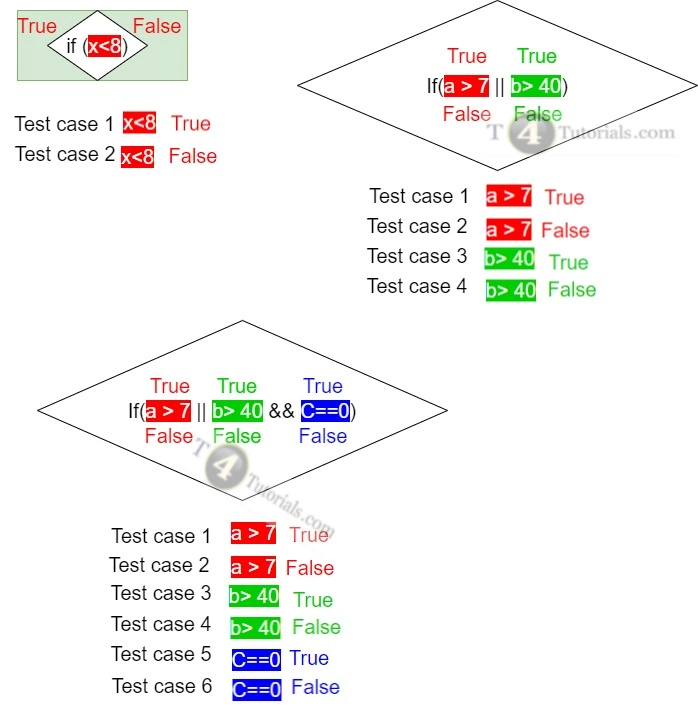Condition Coverage criteria(CC) for software testing
According to Condition Coverage (CC) criteria, every condition must be covered. It means that each condition must have at least one True and one False value. Condition coverage and decision coverage have no subsumption relationship. Important Point: condition coverage testing tests the conditions independently of each other
Examples of Condition Coverage Testing
Example 1
|
1 2 3 4 5 6 7 8 9 |
if((A>0 || B<7)){ cout<<"valid input"; }else{ cout<<"invalid input"; } |
| TestCaseID | A>0 | B<7 | Final output |
| 1 | True | Not required | True |
| 2 | False | True | True |
| 3 | False | False | False |
Example 2
|
1 2 3 4 5 6 7 8 9 |
if((A>0) && (A+B<7)){ cout<<"valid input"; }else{ cout<<"invalid input"; } |
| TestCaseID | A>0 | A+B<7 | Final output |
| 1 | True | True | True |
| 2 | True | False | False |
| 3 | False | Not required | False |
Example 3
|
1 2 3 4 5 6 7 8 9 |
if((A>0 || B<4) && (A+B<7)){ cout<<"valid input"; }else{ cout<<"invalid input"; } |
| TestCaseID | A>0 | B<4 | A+B<7 | Final output |
| 1 | True | don’t care | True | True |
| 2 | True | don’t care | False | False |
| 3 | False | True | True | True |
| 4 | False | True | False | False |
| 5 | False | False | Not required | False |
Example 4
|
1 2 3 4 5 6 7 8 9 10 11 |
int A = 0; if(A>0){ cout<<"valid input"; }else{ cout<<"invalid input"; } |
| TestCaseID | A>0 | Final output |
| 1 | True | True |
| 2 | False | False |